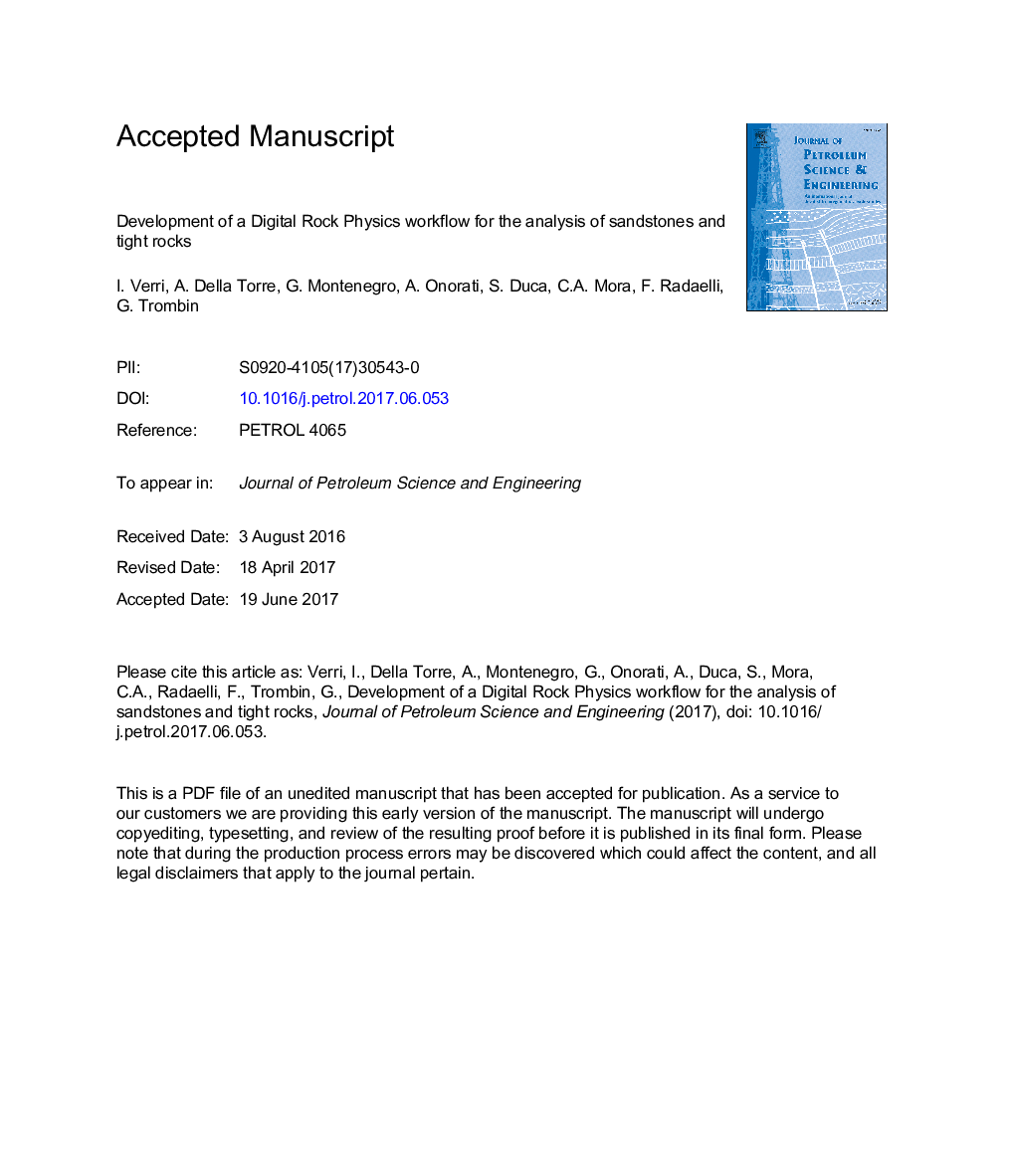| Article ID | Journal | Published Year | Pages | File Type |
|---|---|---|---|---|
| 5484152 | Journal of Petroleum Science and Engineering | 2017 | 15 Pages |
Abstract
Predicting petrophysical properties by means of digital core analysis strongly relies on the operator expertise and becomes very challenging when dealing with clay microporosity, due to resolution limits and a general lack of recommendations. In the standard workflow, 3D images of rock samples are acquired via X-ray computed tomography and processed, to reconstruct pore geometries that are used to set up numerical experiments for the calculation of physical properties, such as permeability. In the present paper, the limits of the standard workflow are investigated and specific strategies are proposed to make the entire process less operator dependent and more reliable when dealing with tight samples. A global thresholding technique is applied for the identification of the pore space. The quality of its performance has been found to be strongly related to contrast, noise and presence of rock microporosity. Threshold selection is more robust if contrast enhancement and denoising algorithms, like bilateral filter and non-local means, are applied. Furthermore, microporosity shall not be excluded from the reconstructed pore space, since it is fundamental in providing connectivity of the flow paths. The selected value for thresholding is used inside an image-based meshing strategy, to create a computational grid directly on the 3D stack of images. Methods to compute porosity, specific surface and average pore diameter are described. Absolute permeability is computed by performing Computational Fluid Dynamics (CFD) simulations of single-phase incompressible flows in the reconstructed pore space. A model to include the presence of an increased resistance to the fluid flow in the microporous region is proposed and validated by comparison with experimental measurements.
Related Topics
Physical Sciences and Engineering
Earth and Planetary Sciences
Economic Geology
Authors
I. Verri, A. Della Torre, G. Montenegro, A. Onorati, S. Duca, C.A. Mora, F. Radaelli, G. Trombin,
